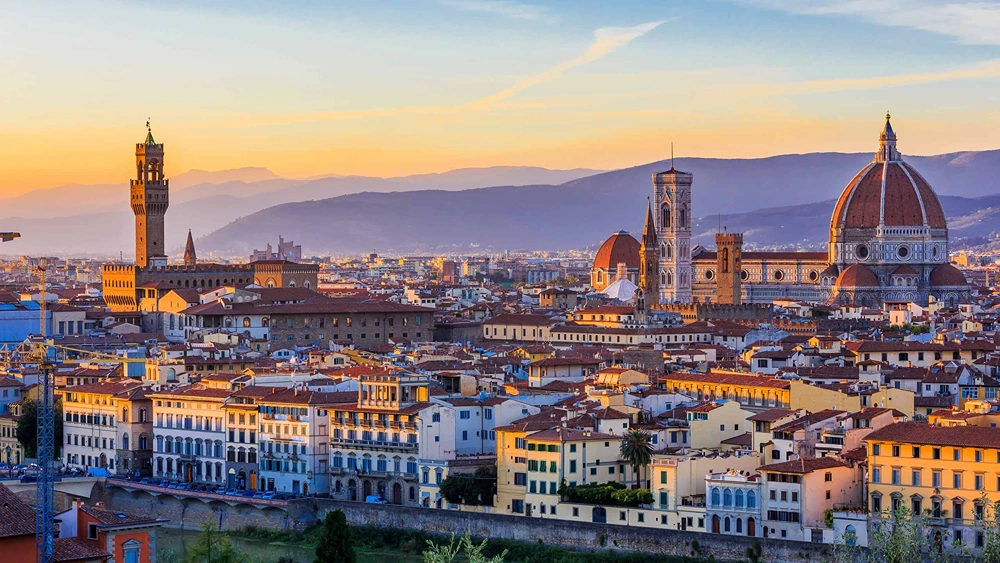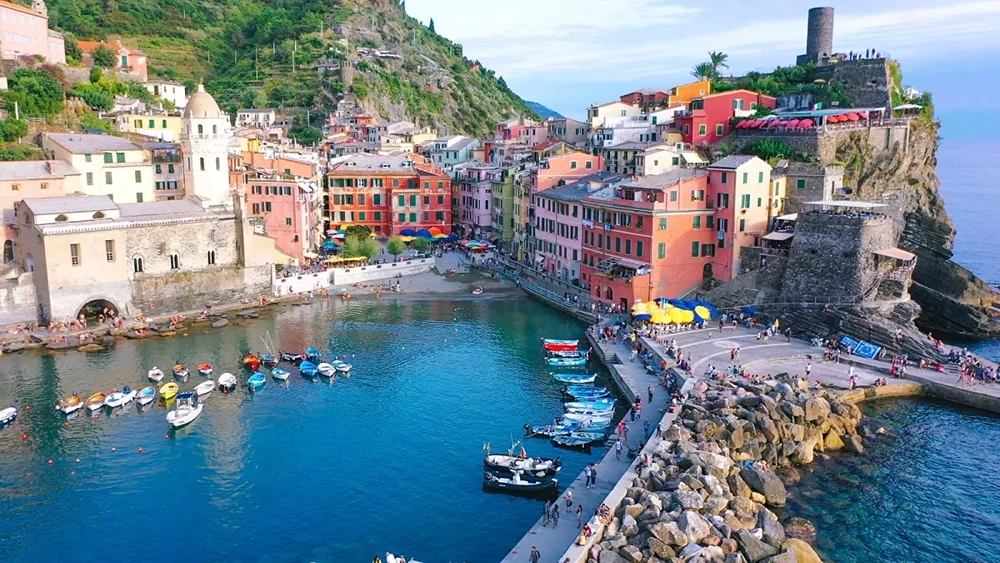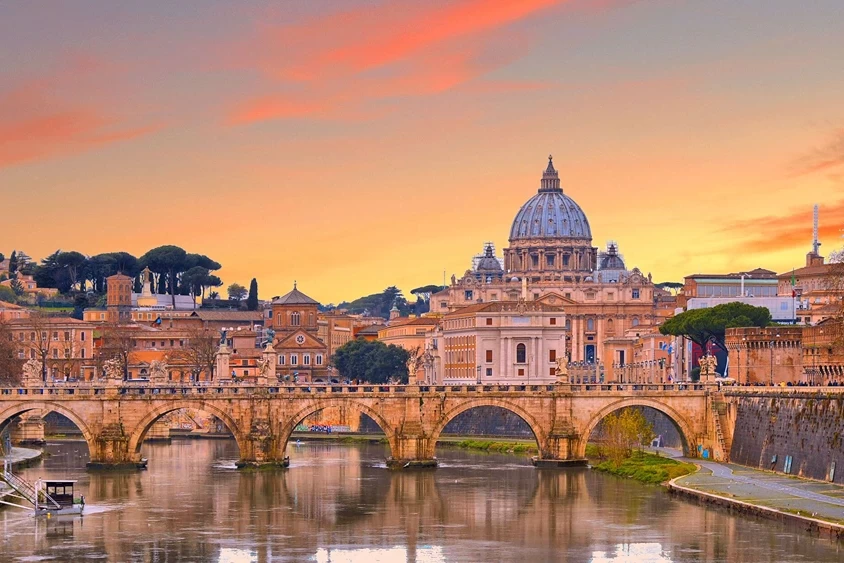Travel Resources
Before you embark on your Italian adventure, consider these valuable resources:
- Flights: Find affordable options to Italy using our flight search tool.
- Travel Insurance: Ensure peace of mind with comprehensive coverage for your trip.
- Car Rental: Explore Italy’s diverse regions at your own pace.
- Tours: Discover the best experiences with trusted local operators.
- Packing Checklist: Don’t forget essentials like comfortable shoes and a travel adapter.

Some History First
Italy’s history spans millennia, shaping Western civilization as we know it. Founded in 753 BCE, Rome grew into one of the world’s greatest empires, leaving an indelible mark on art, architecture, law, and language. The country witnessed the birth of the Renaissance in the 14th century, a period of cultural rebirth that produced some of the world’s most celebrated artists and thinkers. Italy’s journey to unification in 1861 and its experiences through two World Wars have further shaped its national identity, resulting in the vibrant, diverse country we see today.
Italy Today
Modern Italy is a fascinating blend of ancient history and contemporary innovation. As the 8th largest economy in the world, Italy is known for its influential fashion industry, cutting-edge design, and high-end automotive brands. The country continues to be a global leader in art, architecture, and culinary arts. With a population of about 60 million, Italy faces modern challenges such as economic fluctuations and political changes, but its rich cultural heritage and stunning landscapes continue to make it one of the world’s most visited countries, welcoming millions of tourists each year.
Is Italy Safe?
Italy is generally considered a safe country for tourists and residents alike. The country has a relatively low crime rate compared to many other European nations. However, as with any popular tourist destination, it’s important to stay vigilant. Be aware of pickpocketing and petty theft, especially in crowded tourist areas and on public transportation in major cities. It’s advisable to take standard precautions such as keeping valuables secure and being aware of your surroundings. Natural disasters like earthquakes can occur, but they are infrequent and the country has emergency response systems in place.
Where is Italy?
Italy is located in Southern Europe, occupying a distinctive boot-shaped peninsula that extends into the Mediterranean Sea. The country shares land borders with France, Switzerland, Austria, and Slovenia to the north. It also includes the islands of Sicily and Sardinia, as well as numerous smaller islands. Italy’s territory covers an area of approximately 301,340 square kilometers (116,350 square miles), making it the 72nd largest country in the world. The country’s strategic location has historically made it a crossroads of European culture and commerce.
Latest Articles
From The Area
Nothing found.
What is the Best Time to Visit Italy?
Italy is a year-round destination, with each season offering its own unique charm:
- Spring (April to June): Mild temperatures and blooming landscapes make this an ideal time for sightseeing, though Easter can bring crowds and higher prices.
- Summer (July to August): Peak tourist season with hot weather, perfect for beach vacations, but expect larger crowds and higher prices, especially in August when many Italians take their holidays.
- Fall (September to October): Pleasant temperatures and fewer tourists create an ideal atmosphere for enjoying local culture and fall harvest events.
- Winter (December to February): Chilly but festive, with beautiful Christmas markets and great skiing in the Alps, perfect for winter sports enthusiasts and those seeking lower prices in major cities.
How to Get to Italy & Around
Italy is well-connected and easily accessible:
- By Air: Major international airports include Rome Fiumicino (FCO), Milan Malpensa (MXP), and Venice Marco Polo (VCE), with flights from major cities worldwide.
- By Train: High-speed trains connect Italy to major European cities, and the domestic rail network is extensive and efficient.
- By Car: Driving in Italy can be an adventure, offering flexibility to explore rural areas and small towns.
Getting around Italy:
- Trains: The extensive rail network, including high-speed trains like Frecciarossa, is often the most convenient way to travel between cities.
- Buses: Complement the train system and are useful for reaching smaller towns.
- Ferries: Essential for visiting islands and coastal areas.
- Driving: Renting a car is ideal for exploring rural regions like Tuscany, but be prepared for challenging driving in cities.
- Public Transportation: Most cities have efficient bus and/or metro systems.
Things to Do in Italy
Italy offers an endless array of attractions and activities:
- Rome: Explore ancient history at the Colosseum, Roman Forum, and Pantheon, and visit Vatican City.
- Florence: Admire Renaissance art at the Uffizi Gallery and see Michelangelo’s David at the Accademia.
- Venice: Take a gondola ride through the canals and visit St. Mark’s Basilica.
- Milan: See Leonardo da Vinci’s Last Supper and explore the fashion district.
- Tuscany: Tour picturesque hill towns and enjoy wine tasting in Chianti.
- Amalfi Coast: Drive along the stunning coastline and visit charming towns like Positano.
- Sicily: Explore ancient Greek ruins and climb Mount Etna.
- Cinque Terre: Hike between five colorful coastal villages in Liguria.
Where To Stay In Italy
Italy offers a wide range of accommodation options to suit every budget and preference:
- Historic City Centers: Stay in the heart of cities like Rome, Florence, or Venice for easy access to major attractions.
- Agriturismos: Experience rural Italy by staying at a working farm, especially popular in regions like Tuscany and Umbria.
- Coastal Resorts: Enjoy beach vacations along the Amalfi Coast, Sardinia, or the Italian Riviera.
- Mountain Chalets: Perfect for skiing holidays in the Alps or Dolomites.
- Bed and Breakfasts: Experience Italian hospitality in family-run establishments.
Book well in advance, especially during peak season (June-August) and major events like Venice Carnival or Milan Fashion Week.

What To Eat In Italy
Italian cuisine is world-renowned for its regional diversity and high-quality ingredients:
- Pasta: Try different shapes and sauces, from spaghetti carbonara in Rome to tagliatelle al ragù in Bologna.
- Pizza: Indulge in authentic Neapolitan pizza in Naples or try regional variations.
- Risotto: Savor creamy rice dishes, especially in northern regions like Lombardy and Veneto.
- Gelato: Enjoy artisanal Italian ice cream, available in countless flavors across the country.
- Coffee: Experience Italy’s coffee culture, from espresso to cappuccino.
- Wine: Sample renowned Italian wines from various regions, such as Chianti from Tuscany or Barolo from Piedmont.
- Regional Specialties: Try local dishes like osso buco in Milan, bistecca alla fiorentina in Florence, or arancini in Sicily.
Don’t miss the experience of dining at a traditional trattoria or enjoying aperitivo (pre-dinner drinks and snacks) like a local.
Entry & Exit Requirements
As part of the Schengen Area, Italy follows common EU border policies:
- EU citizens: Can enter with a valid ID card or passport.
- Non-EU citizens: Generally need a valid passport and may require a Schengen visa. Check specific requirements based on your nationality.
- Stays longer than 90 days: May require a long-stay visa or residence permit.
Always check the latest entry requirements before your trip, as they can change.
What To Pack For Your Trip
Consider these essentials when packing for Italy:
- Comfortable walking shoes for exploring cities and uneven ancient sites
- Modest clothing for visiting religious sites (shoulders and knees should be covered)
- Travel adapter for European outlets
- Reusable water bottle to stay hydrated and refill at public fountains
- Italian phrasebook or language app
- Sun protection, including sunscreen, sunglasses, and a hat, especially in summer
- Light jacket or sweater for cooler evenings, even in summer
Remember to pack any necessary medications and a copy of your travel insurance.
FAQs
The official currency of Italy is the Euro (EUR).
While Italian is the official language, many locals in tourist areas speak English. Learning basic Italian phrases can enhance your experience.
Yes, major credit cards are widely accepted in most establishments in Italy.
Explore iconic cities such as Rome, Florence, Venice, and Milan for a comprehensive Italian experience.






